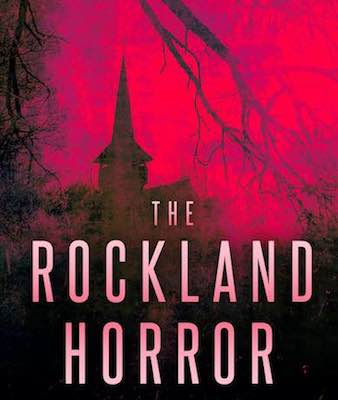Available now!
Hey, I’ve got a new horror series coming out. The first book will hit Amazon later this week, in all likelihood. (It is in the final proofreading stage.)
Here’s a little about the series:
Origins of the story: The Evil Dead in a haunted house
One of my all-time favorite horror films is Sam Raimi’s cult classic, The Evil Dead (1981).
The Evil Dead (just in case you’re one of the rare horror fans who hasn’t seen the film) follows a simple setup and plot:
A group of college students decide to spend a weekend in a cabin in rural Tennessee. One of them discovers a copy of the Sumerian Book of the Dead, along with a tape recorder. Both items were left in the cabin by an archeologist—who has apparently met a bad end.
And, of course, the college students throw caution to the wind, and tamper with both items. Because that’s the sort of thing people always do in horror movies.
Hijinks ensue. Evil spirits are roused, and they take over the college students one-by-one, transforming each of them into homicidal zombies.
I loved The Evil Dead, even though I recognized some of its flaws.
What flaws? you ask. The characters are cardboard cutouts, for one thing. Also, there is Raimi’s fondness for blending black humor with horror. The combination mostly worked in The Evil Dead. It detracted from some of his subsequent horror films.
But flaws aside, The Evil Dead was truly a powerful film, especially for the early 1980s. I recall watching it for the first time back in the summer of 1983. I watched a VHS rental copy of The Evil Dead, on the Zenith television in my parents’ living room. (I was 14 or 15 at the time.) For a full 85 minutes, my eyes were glued to the television screen. The rest of the world receded into the background. Only good storytelling can do that.
My concerns and storytelling style are different from Raimi’s. I like more character development; and I don’t like comedy-horror. But I loved The Evil Dead, nevertheless. I’ve long known that I would someday write a story of my own that would take The Evil Dead as its inspiration.
* * *
One day during the long, turbulent summer of 2020, I decided that I wanted to write a book that might best be described as “The Evil Dead inside a haunted house”. Basically, I was aiming for a story that captured the spirit of Raimi’s 1981 movie, without ripping it off.
I wrote an initial story that more or less followed the plot line of the 1981 movie. It was set in the present day. But as mentioned above, I didn’t want to rip off Raimi. I swapped out the claustrophobic Tennessee cabin of The Evil Dead for a big, old house in Southern Indiana. Like all haunted houses, this one had a backstory. (Haunted houses are usually haunted for a reason, after all.)
As I began writing the book, though, I discovered something: The backstory was much more than a backstory. The house had a long, horrific history—as did the people who lived (and died) there.
I realized that one story simply wasn’t going to get the job done.
So I scrapped my original manuscript, and went back to the drawing board.
Instead of starting the story in the present day, I decided to go back to the very beginning, to the origins of The Rockland Horror.
That is where Book One begins…
A total of nine books have been planned out, and are in various stages of writing and development. When completed, The Rockland Horror saga will cover the horrific history of one cursed house from 1882 through 2020.




